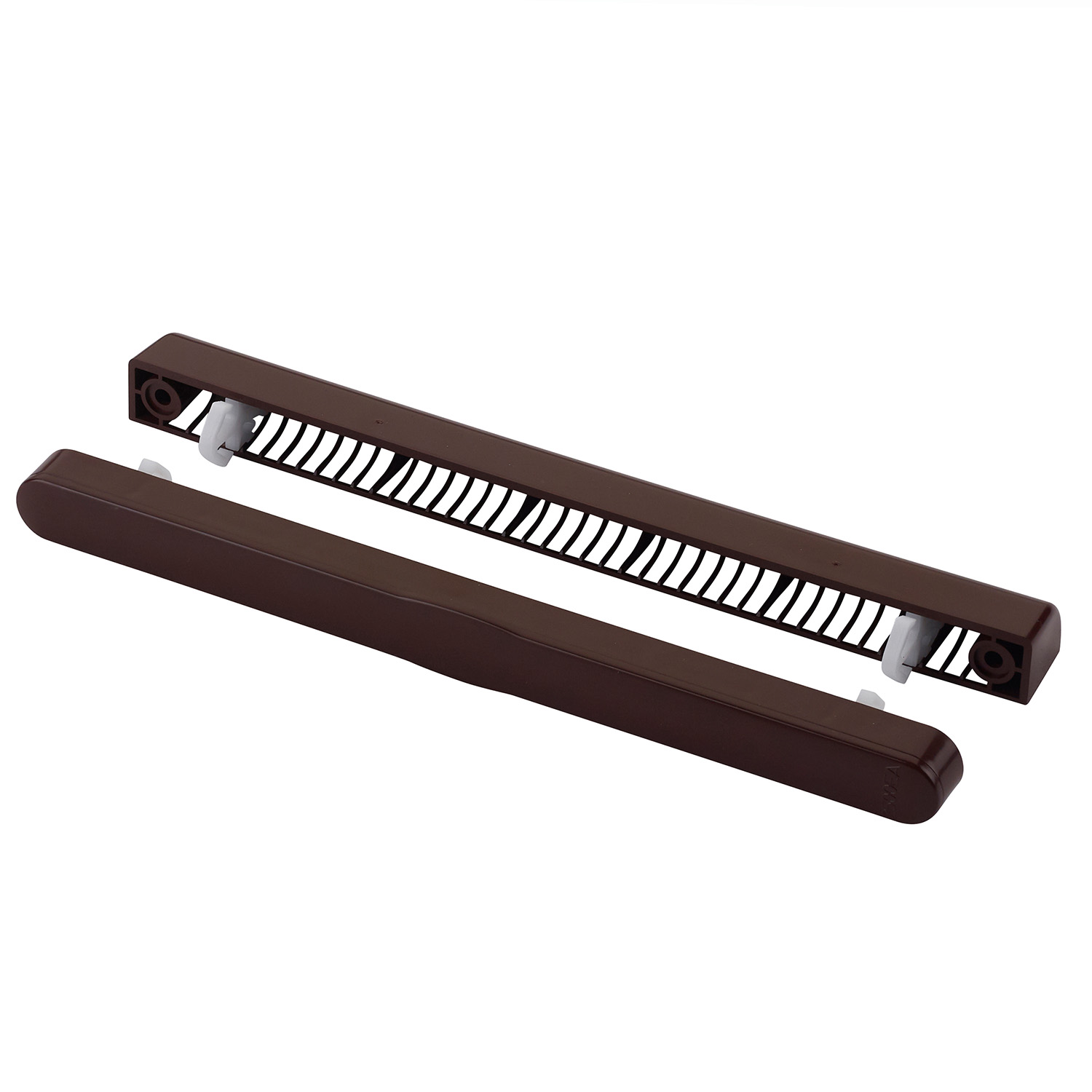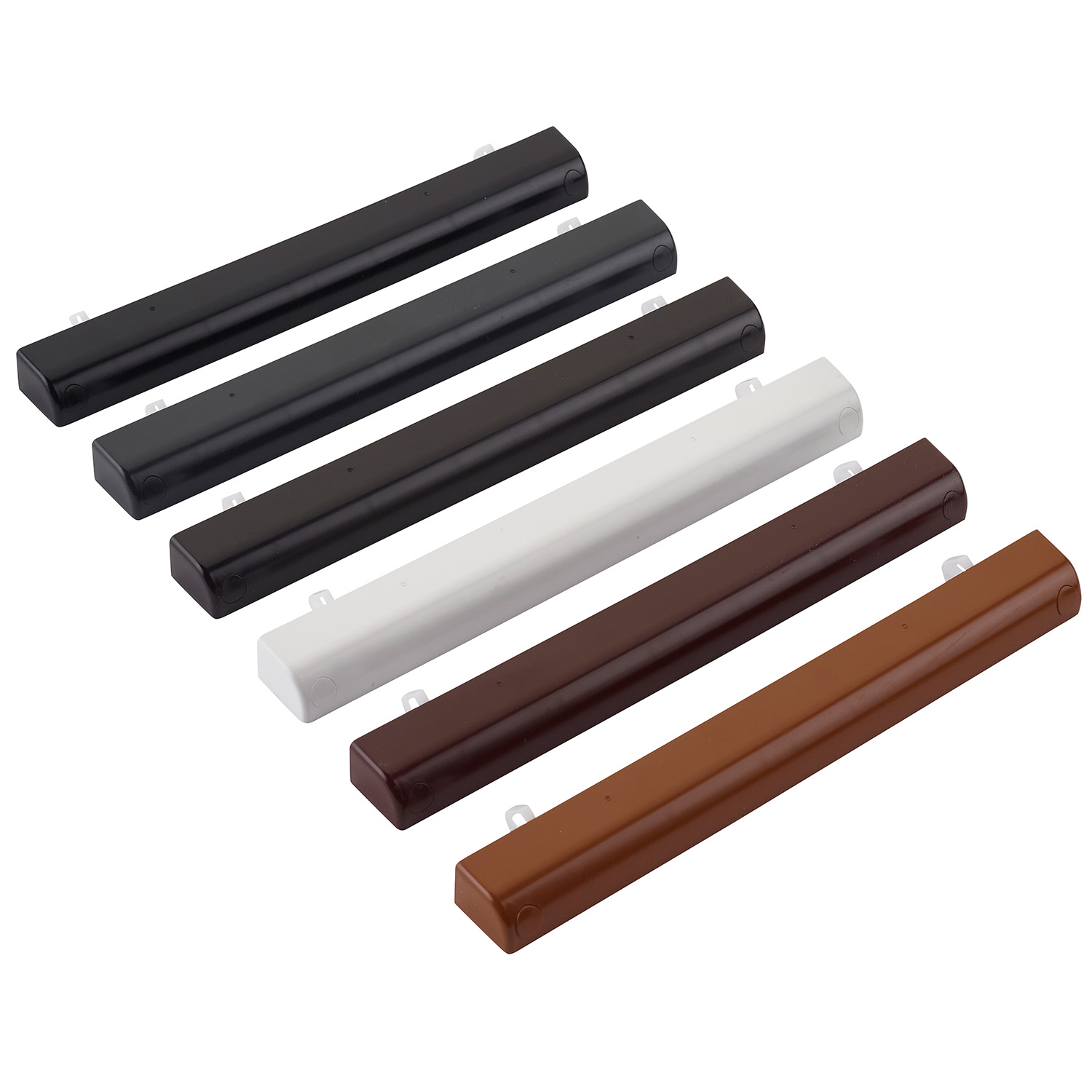Let’s talk ventilation with ERA Experts
What is a Trickle Vent?
A ventilation device that is routed and fitted into a window (or door), usually the top, to provide a ‘trickle’ of air from the outside and bring inside a property. Airflow is controlled by the internal canopy and a user can open it to let air flow into the room. Generally, vents also filter out and reduce dB noise pollution so there are no adverse effects when the vent is open.
If a property has poor ventilation, there is an increased likelihood of moisture building up in the air, which can lead to condensation, resulting in the formation of damp and mould on walls, ceiling, and other surfaces. Vents are used to ensure there is adequate airflow into a habitable room to prevent this moisture build-up

Why is everyone talking about Trickle Vents?
In short, wherever the application, trickle vents are no longer optional, regulations around buildings have changed and it is a requirement by law to adhere to minimum ventilation within properties. Building Regulations state minimum ventilation is required in habitable rooms, kitchens, and bathrooms and it's up to the installer to comply.
New Build
There are now reporting, compliance and certification measures required for all new build installations. Each home will need individual confirmation that they comply with the latest building regulations and certification must be provided when the house is sold. The responsibility falls to the installation company to prove the measures are in place.
Replacement Windows
Regardless of whether an existing window has a trickle vent, a new replacement window in any home is required to have a trickle vent fitted. Again, the responsibility falls to the installer and certification will be required to confirm regulations have been met, if not, it could be detrimental to the homeowner when re-selling if no certificate is present. Ventilation requirements will be policed by competent person schemes such as Fensa, Assure, Certass and LABC.
Social Housing
Under the current Decent Homes Standard, a property is considered a safe and decent home if it meets the current statutory minimum standard for housing, is in a reasonable state of repair, has reasonably modern facilities and services, and provides a reasonable degree of thermal comfort. Although any replacement window is covered in the above requirements, the standard also calls for consideration to improve overall energy efficiency, such as additional insulation and ventilation, even if the dwelling already meets the minimum insulation requirements.

What are the Building Regulations?
In 2006, the measurement of ventilation was changed to the equivalent area as a more accurate indicator of how much air flows through a vent (measured in mm2 followed by EQA i.e. 4000mm2 EQA). In 2021, Building Regulations were updated for both ventilation (Part F) and energy ratings (Part L) for new build applications and replacement windows to cover minimum requirements.
Dwellings now require a minimum of 8000mm2 EQA in habitable rooms and kitchens for multi-floor dwellings and 10000 mm2 EQA in single-storey dwellings. Bathrooms require a minimum of 4000mm2 EQA; whereas WCs and utility rooms do not have a minimum requirement but do need to be vented. The measurement is by room (depending on the property footprint) and the whole house calculation has been scrapped.
Vents can be added in either multiples of 4000mm2 EQA or 5000mm2 EQA to achieve the required figure (8000mm2 EQA = 2 x 4000 vents). This renders smaller older vents redundant. All vents are also required to have the EA performance stamped on the internal section of the trickle vent.
Part F of the Building Regulations
Volume 1 is an approved document that covers ventilation and gives guidance on how to comply with the requirements for dwellings to protect the health of occupants of the building by providing adequate ventilation. Without adequate ventilation, mould and internal air pollution might become hazardous to health.
The minimum requirements have increased for new builds and the replacement market and it’s the responsibility of the installer to make sure they are adhering to the new regulations. With all trickle vent measurements now in Equivalent Area mm2 rather than Free Area mm2 additional ventilation is required to help circulate stagnant air in the living spaces. Heat recovery, mechanical ventilation systems or extractor fans are alternative options to background ventilation (trickle vents). This standard may be possibly updated again in 2025.
Part L of the Building Regulations
Volume 1 is an approved document that covers the conservation of fuel and power. The paper gives guidance on how to comply with the energy efficiency requirements for dwellings. Details how to calculate the energy performance of a building and sets out the minimum requirements including fabric energy rate, target energy rate (new dwellings) and CO2 emissions. Guidance in conjunction with Approved Document F, Volume 1 states ventilation systems should be designed so that they can be commissioned to suitable ventilation rates so that spaces are not significantly overventilated.


How can ERA help?
Stocked and ready to fit, the ERA range of trickle vents offers an easy way to achieve the minimum requirements. Available in a range of sizes (2500, 4000 and 5000), colours and fitting options to meet any application. The compact sleek design sits discreetly within the window and the aerodynamic feature directs the airflow efficiently through the vent’s pathway.
Supplied with fixing clips, the vent easily pushes into place and installs within seconds. The clip automatically centres the vent in the rout, aiding location to ensure a correct fit. There is also an option to screw fix if preferred.
The innovative “link” allows the closure plate to be positioned to reduce draughts with the benefit of directing air away from occupants, easily controlling the airflow into a dwelling. Internal and external vents are supplied separately and can be mixed and matched to suit the individual colour of the internal and external finishes of the window.
You can achieve the minimum requirements of 8000mm2 EQA by using 2 x 4000mm Link Vents per habitable room. Further information on obtaining EQA can be found below:
- 2500 Link Vent on a 10mm rout = 2000mm2 EQA
- 2500 Link Vent on a 13mm rout = 2500 mm2 EQA
- 4000 Link Vent on a 13mm rout = 4000 mm2 EQA
- 5000 Link Vent on a 10mm rout = 4000 mm2 EQA
- 5000 Link Vent on a 13mm rout = 5000 mm2 EQA
Or more information can be found in Part F of the Building Regulations Volume 1 and Part L of the Building Regulations Volume 1.

Further information
For more information on ERA’s range of Trickle Vents, please visit
What are the acoustic guidelines?
Acoustics is a specialist science covering the generation, control, transmission and detection of sound and vibration. A Dn,e,w figure reflects testing at every frequency and the trickle vent's true performance.
2500 Link Vent
Equivalent Area 2500mm2 EQA Free Area 2512mm2
- 10mm Acoustic D n,e,w (+/-) – vent open – 35 (-1:-1) Acoustic D n,e,w (+/-) – vent closed – 40 (0;0)
- 13mm Acoustic D n,e,w (+/-) – vent open – 34 (-1:-1) Acoustic D n,e,w (+/-) – vent closed – 46 (-1;-1)
4000 Link Vent
- 13mm Acoustic D n,e,w (+/-) – vent open – 32 (-1:1) Acoustic D n,e,w (+/-) – vent closed – 41 (0;0)
5000 Link Vent
Equivalent Area 5000mm2 EQA Free Area 5049mm2
- 10mm Acoustic D n,e,w (+/-) – vent open – 32 (-1:-1) Acoustic D n,e,w (+/-) – vent closed – 37 (0;0)
- 13mm Acoustic D n,e,w (+/-) – vent open – 31 (-1:-1) Acoustic D n,e,w (+/-) – vent closed – 42 (0;0)
